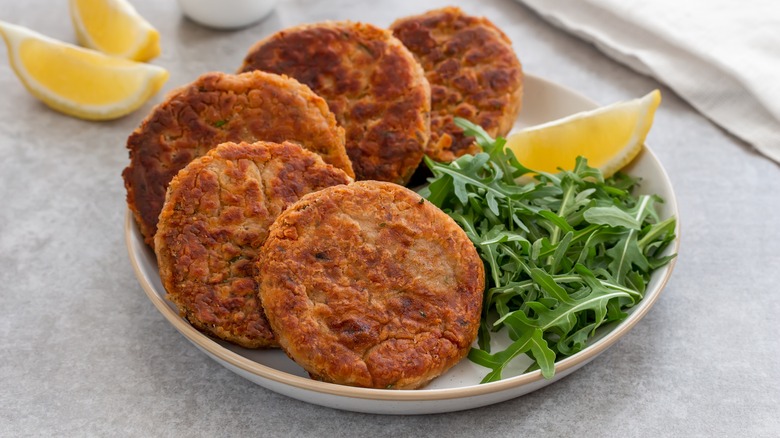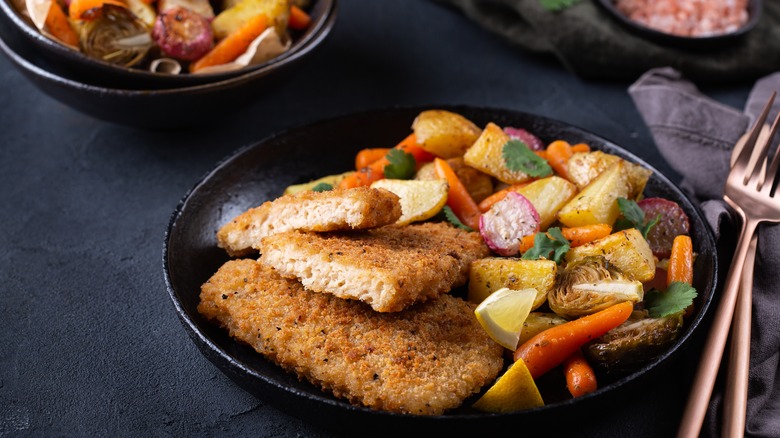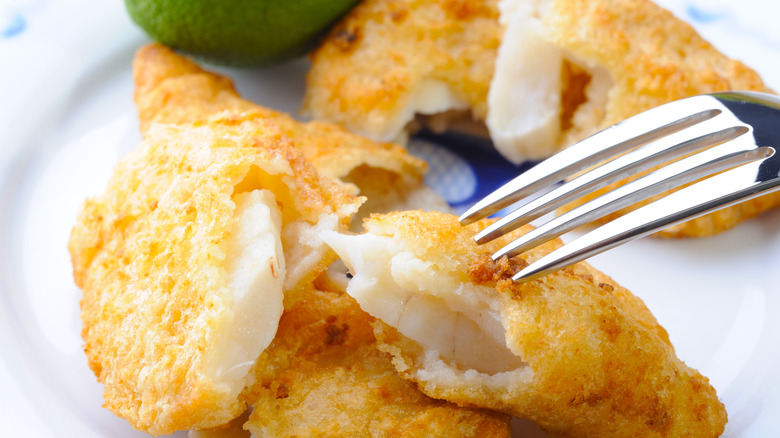What Is Plant-Based Seafood Actually Made Of?
Sustainable, plant-based foods continue to gain momentum, providing an increasingly varied spread of meat-free alternatives to choose from for daily meals. Seafood is no exception, and you can now stock your fridge with a delectable spread of plant-based crab, tuna, shrimp, salmon, fish-free sushi, and more. But what goes into these options?
These goods are manufactured from 100% plant-based ingredients and they are designed to not only taste like the sea creature they mimic but also have the same texture, shape, and appearance. These products do not include any actual seafood or other meat products, so they provide a fantastic alternative for vegetarians as well as those with seafood allergies. Although, it's important to remember that a plant-based seafood product is not vegan by default, as animal products may have been used in the manufacturing process. If you're vegan, be sure to check the labeling of plant-based seafood to ensure it meets your dietary needs.
The ingredients that brands use to make these seafood-like foods will vary, but some of the most common include soy, a variety of legumes like chickpeas and peas, and vegetable oils and starches. For example, Good Catch, one of the biggest vegan seafood brands in the U.S., uses a blend of peas, chickpeas, lentils, soy, fava beans, and navy beans to achieve the flavor and flaky texture of fish. Brands will also often add seaweed, red or green algae, and sea salt to their recipes to infuse their products with fresh ocean flavor.
How is plant-based seafood produced?
Some complex processes (including extrusion, shaping, and flavoring) are used to create plant-based seafood. Extrusion is a process that uses specialized machines that apply extreme heat and pressure to raw materials to rapidly produce food products. Heat and pressure denature the proteins in the raw materials to give a uniformly textured product. Then, during the final stages of the extrusion process, specialized settings can either puff the product into nuggets, flake the mixture into a fish fillet, or even layer it to give it the density of salmon.
The fattiness of fish comes from a combination of molecules that can also be created in a lab. For example, manufacturers can give their plant-based fish an oily mouthfeel by adding lab-generated long-chain fatty acids, such as omega-3s and omega-6s.
Extrusion isn't the only method used, and scientists are continuing to explore cutting-edge techniques for plant-based seafood. In 2023, researchers from the National University of Singapore developed a process to replicate the texture of real fish using a food-grade 3D printer. The team has used their 3D printing technique to produce salmon fillets and shrimp, even using red lentil protein to achieve a realistic rosy pink color and texture.
To recreate the distinct flavor of the sea, manufacturers will experiment with different herbs and spices as well. Common additions include Old Bay seasoning, lemon zest, kelp flakes, dulce flakes, or seaweed.
The many ways to prepare plant-based seafood
The good news for fans of plant-based seafood is that the cooking techniques and skills remain much the same whether you're frying, baking, steaming, grilling, or searing the food — just follow the recommended preparation steps on the packaging. Often, plant-based seafood can even be served "raw" and taste remarkably similar to the real thing.
If you're a fan of delicious food that can be prepared fast, plant-based seafood will also fit right into your kitchen. Many top plant-based brands offer a wide range of seafood alternatives precooked and frozen (meaning you can have sustainable, plant-based prawns, scallops, crab cakes, crumbed hake, and calamari at your fingertips).
Pairing your plant-based seafood with specific ingredients that naturally enhance the seafood flavor profile is a great way to elevate your dish, too. For sauces, use ingredients like white wine, lemon, garlic, onion, or white miso paste to capture a realistic fish flavor. For side dishes or garnishes, use capers, dried seaweed, or nori. If your plant-based alternative is a little dry, you can also add a pat of vegan or regular butter to bring out a creamier texture, or make this classic homemade tartar sauce (though you may want to substitute the mayo).



